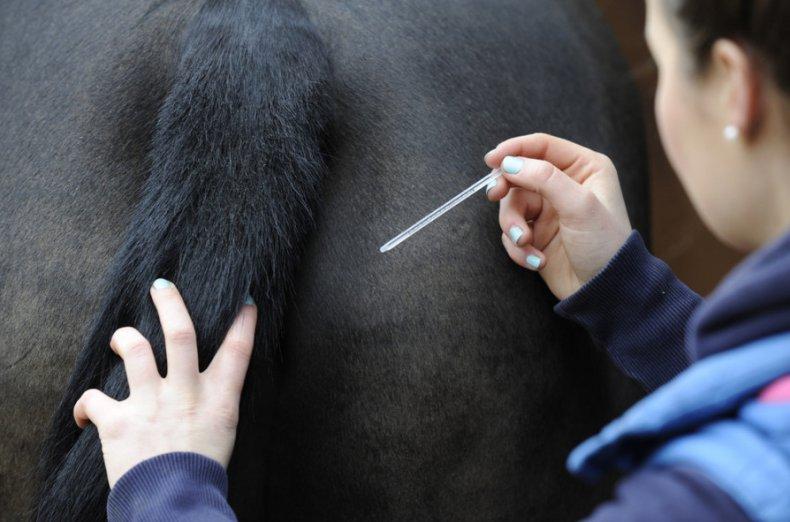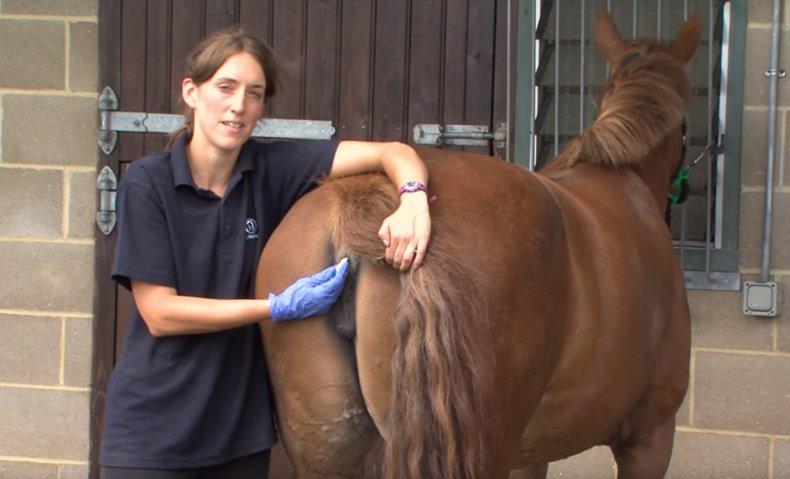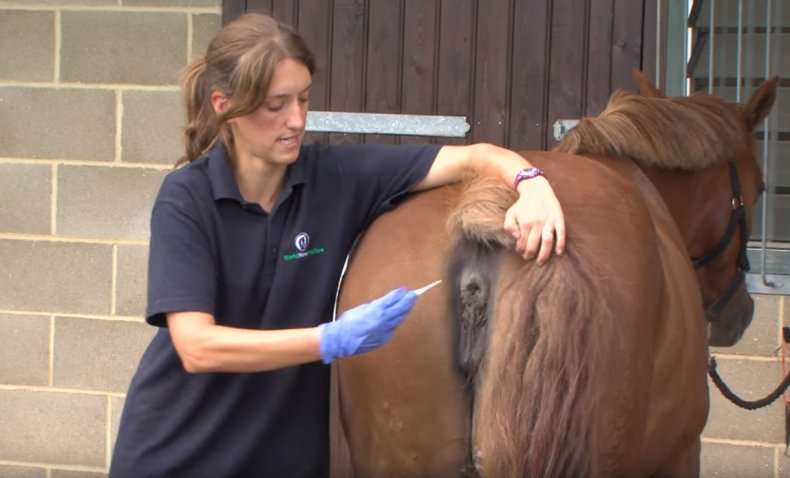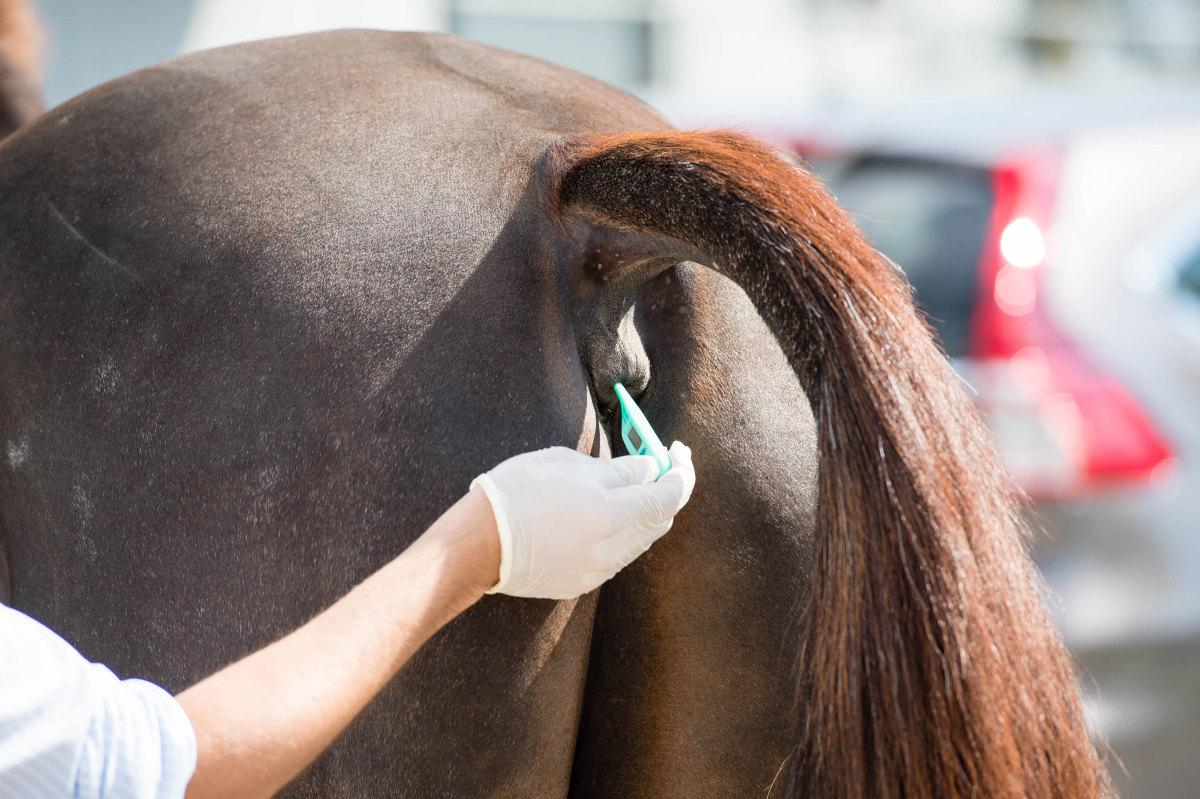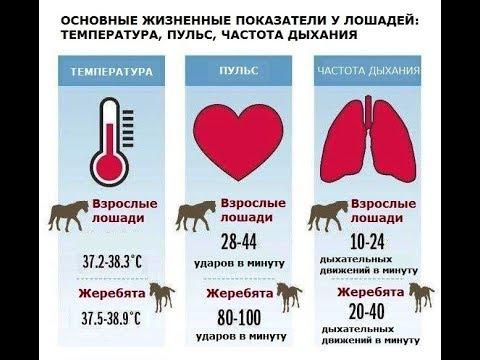Normal temperature, pulse, breathing rate of a horse are signs indicating the health of the animal. Deviation from the norm indicates the beginning of the development of a dangerous disease. Usually the temperature rises due to an infectious disease. A decrease in the indicator can be caused by internal complications or allergies. If the temperature is not normal, it is recommended to show the horse to a veterinarian.
Normal temperature
A horse is an animal that requires careful care and acceptable living conditions.At the age of 6-9 months, primary vaccination of stallions is carried out. The fact is that there are infectious diseases (anthrax, rabies, tetanus) for which animals cannot be cured, and the only salvation is vaccination.
It is recommended to keep horses in clean stables and monitor the quality of feed and water. True, even by observing preventive measures it is impossible to protect animals from infections. A horse can be infected by insects, rodents, and sick animals. A horse may accidentally drink from a contaminated pond or eat contaminated feed. It is better to constantly monitor the health of horses.
The main things to pay attention to are temperature, breathing rate and pulse. It is recommended to examine the animal at rest, and not after a walk or work. It should be remembered that a horse's temperature is lowest in the early morning and highest in the evening. Temperature fluctuations also depend on the breed of animal.
The normal body temperature of an adult horse is 37.5-38.5 degrees. If the indicator is higher or lower than normal, then the animal is sick. True, a slight increase to 39.4 degrees is allowed. Temperature usually rises after physical activity. In healthy foals it reaches 39 degrees.
It is recommended to measure your pulse and breathing rate at the same time. Definitely at rest. A healthy horse should have a heart rate of 36-42 beats per minute. An acceptable breathing rate for an animal is 8-14 breaths in 60 seconds. In order to determine whether a horse is sick, you still need to carefully examine it. If you notice serious symptoms (discharge, ulcers, seizures, wheezing, coughing), you should contact your veterinarian.
Why there may be deviations from the norm
Typically, an increase in temperature to 42 degrees indicates an infectious disease.Horses can get sick from tuberculosis, leptospirosis, listeriosis, smallpox, salmonellosis and other diseases. An animal often becomes infected on pasture, because dangerous bacteria live in the soil for several years. The object of infection can be dirty water, grain feed, hay or silage contaminated by rodents. Harmful bacteria and fungi live and multiply in wet bedding and penetrate the animal’s skin through wounds and insect bites.
Important! An increase in temperature can be caused by prolonged exposure to heat, pregnancy of the horse, or intense physical exertion.
The animal’s temperature is not only higher, but also lower than normal. The reason for this condition: hypothermia due to prolonged exposure to a cold room or outdoors, a state of shock, an allergic reaction, internal illness, as well as the onset of oncology.
Main symptoms
The onset of the disease is determined by measuring the animal's temperature, as well as pulse and respiration rates. There are a number of other signs that can serve as a signal of a dangerous disease.
Symptoms indicating the presence of the disease:
- the gums are not pink, but brick-red, yellow or white;
- severe, causeless sweating;
- chills;
- lethargic or, conversely, excited state;
- loose stools or constipation;
- urine is not yellow, but red;
- excessive salivation;
- discharge from the nose and eyes;
- grinding of teeth;
- muscle twitching, cramps;
- cough, wheezing;
- refusal to feed, loss of appetite.
Depending on the disease, the animal exhibits certain painful signs. Only a veterinarian can determine the disease and prescribe treatment. You can alleviate the animal's condition by giving it plenty of fluids. The water should not be too cold.
How to measure temperature correctly
In order to measure your horse's temperature, you need to buy a veterinary thermometer with a hard or flexible long end. The fact is that this device is inserted halfway into the animal's anus. Thermometers are sold in veterinary pharmacies. A device designed to measure a horse's body temperature must have a long end (a thin tube). It is better to buy a digital thermometer (price: 3-10 dollars).
Two people will be needed to take the temperature. One - calms the animal, stroking its neck. Another person inserts a thermometer into the anus. You can measure your temperature yourself. True, you will have to tie the animal to a pole. It is advisable to carry out the procedure after bowel movement. It is recommended to wash the anus.
Temperature measurement method:
- Lubricate the long end of the device with Vaseline;
- stroke the horse's buttocks;
- stand very close, on the left side;
- take the base of the tail and move it to the side;
- carefully insert the thermometer (halfway) into the anus;
- constantly hold the tail so that the animal does not knock over the protruding device;
- wait 15-60 seconds;
- Carefully remove the thermometer and take readings.
After the procedure, the device must be washed to remove feces and disinfected. A clean thermometer can be placed in a box. It is better to store the device in a first aid kit, along with other medications for animals.
Treatment methods
Before treating an animal, it is necessary to have it examined by a veterinarian and make a diagnosis. Horses suffer from various diseases. There are no universal drugs that treat all diseases at the same time. In each specific case, doctors prescribe the necessary treatment. The animals are first required to undergo tests.
Elevated temperature in a horse
If an animal has a high fever, it most likely has some kind of infectious disease. In order for horses to get sick less, it is recommended that they be vaccinated in the first months of life. Animals are vaccinated against the most dangerous diseases (anthrax, rabies, tetanus, influenza).
If a vaccinated horse still gets sick, it means it has a weakened immune system. As treatment, the doctor prescribes serums, antibiotics, hormonal agents, diuretics, ointments, and in rare cases, gives painkillers. During treatment, the horse must be quarantined, that is, in a separate, darkened room.
Animals are prescribed injections, IVs, enemas, and gastric lavage. A sick horse is given soft bedding and light food. The course of treatment lasts 1-2 weeks.
Important! Horses do not tolerate high temperatures well. Doctors usually prescribe them antipyretics (Fluniject, Phenyl). Although, if antibiotics are given, the temperature drops after their use. It is recommended to give the animal plenty of lightly salted water. The temperature can also be lowered with the help of cold rubdowns and droppers with saline solution.
Below normal
If the animal's temperature is below 37.5 degrees, then this may be a symptom of some kind of internal disease. The diagnosis is made by specialists by examination, and they always do tests and ultrasound. True, a similar condition is observed in exhausted, weakened horses, as well as after hypothermia or drinking cold water. Low body temperature may be due to allergies. Hypothermia also occurs during fever.
When the temperature drops sharply, the animal has cold skin covered with sticky sweat. The mucous membranes are blue due to stagnation of venous blood. The lower lip may droop.A sick animal has difficulty standing on its feet. Leg buckling or tremors may occur.
First of all, the animal needs to be put on a diet and given plenty of warm drinks; the water can be slightly salted. The room should be warm. It is recommended to change the bedding and add plenty of dry straw. Treatment is carried out only after diagnosis has been established. A veterinarian must prescribe medications.
Prevention
In order for a horse to be healthy, it needs care and proper nutrition throughout its life. A few months after birth, animals are vaccinated against the most common diseases.
At any time of the year, even in winter, you need to hygienically clean your horse. In winter, the animal's skin is wiped with a damp sponge; in summer, the horse can be watered with water from a hose. Every year it is necessary to carry out antiparasitic measures, give anti-worm medications, and remove fleas.
And the stable itself should always be clean, dry and warm. It is necessary to change the litter regularly. It is advisable to disinfect the premises once a month. Caustic soda, lime milk, and chlorine-containing solution are used as disinfectants. During disinfection, animals must be removed from the premises. After sanitization is completed, the stable is washed with clean water and ventilated.

